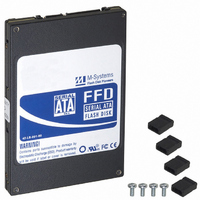SD8XA-004G-000000 SanDisk, SD8XA-004G-000000 Datasheet - Page 63

SD8XA-004G-000000
Manufacturer Part Number
SD8XA-004G-000000
Description
SSD ULTRA320 SCSI 4GB
Manufacturer
SanDisk
Series
Ultra320r
Datasheet
1.SD8NA-104G-000000.pdf
(70 pages)
Specifications of SD8XA-004G-000000
Memory Size
4GB
Memory Type
FLASH
Lead Free Status / RoHS Status
Lead free / RoHS Compliant
Other names
FFD35-U3S-4-X-P80-P
FFD35-U3S-4-X-P80-P
FFD35-U3S-4-X-P80-P
Q: What are Single-Ended and LVD (Low Voltage Differential)?
Q: What are synchronous and asynchronous transfers?
A: SCSI can use two handshaking modes, Asynchronous and Synchronous. The main
63
o
o
o
difference is as follows:
o
o
Single-ended SCSI has single-ended TTL transceivers, allowing up to 5 MHz data
transfer rates with up to 6 m cable length, or up to 10 MHz data transfer (Fast SCSI)
with up to 3 m cable length.
Differential bus signals are carried on a pair of wires, with each signal having its own
return wire. The first wire of the pair carries the same type of signal that the single-
ended SCSI carries. The second wire of the pair, however, carries its logical inversion.
The receiver takes the difference of the pair (hence differential), which makes it less
susceptible to noise and allows for greater cable length.
LVD combines the lower power and cost of single-ended SCSI with the long cable
lengths and data integrity of High-Voltage Differential (HVD) SCSI. The net advantage
in this configuration is greater cable length (up to 12 m for 15 devices) and a faster data
rate.
Asynchronous is basically a classic REQ/ACK handshaking system for each data
packet.
Synchronous, multiple REQs can be issued before receiving ACKs, thus increasing the
overall transfer rate.
Product Specification and User Manual
SSD (Formerly FFD) Ultra320 SCSI 3.5"
43-PS-0305-00 Rev. 2.2












